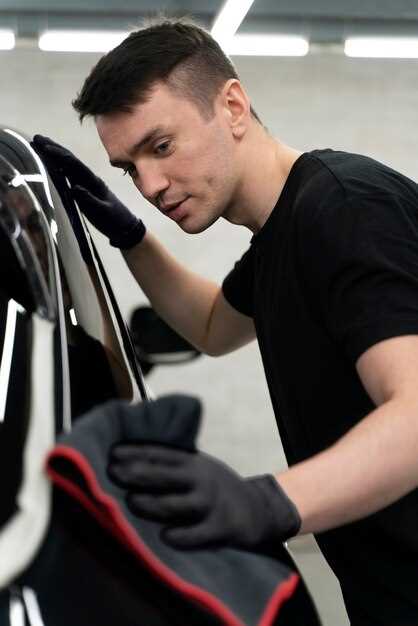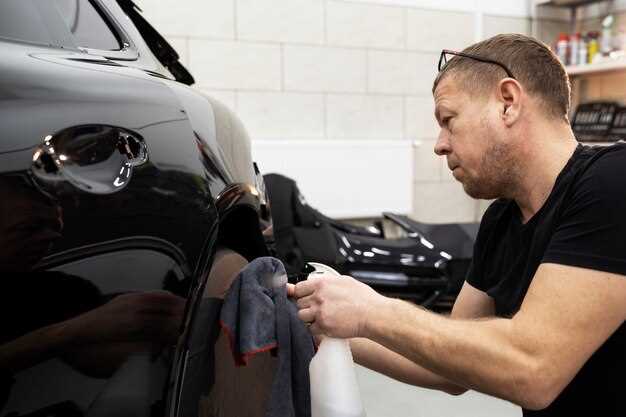
Ceramic coating has emerged as a popular option among car enthusiasts looking to protect their vehicles, especially for high-performance models like roadsters. This advanced technology involves applying a liquid polymer that chemically bonds to the vehicle’s paint, creating a protective layer that enhances durability and aesthetic appeal. However, while ceramic coatings offer numerous advantages, they also present certain disadvantages that potential users should carefully consider.
One of the primary benefits of ceramic coating is its exceptional protection against environmental contaminants. Roadsters, often driven in various conditions, are susceptible to elements such as UV rays, dirt, bird droppings, and tree sap. The hydrophobic properties of ceramic coatings make it easier to clean surfaces and maintain a glossy finish, ensuring that your roadster looks pristine for longer periods. Moreover, this coating can significantly reduce the chances of paint chips and scratches, providing an extra layer of defense for your vehicle’s exterior.
However, ceramic coatings are not without their drawbacks. The application process can be time-consuming and, depending on the quality of the product used, may require professional installation. Additionally, while ceramic coatings offer impressive longevity, they can be costly, leading some owners to question whether the benefits outweigh the expenses. Understanding both the advantages and the disadvantages is crucial for roadster owners considering this protection solution, as it helps in making an informed decision about their vehicle’s upkeep.
Ceramic Coating for Your Roadster: Benefits and Drawbacks

Ceramic coating has become a popular choice among car enthusiasts for protecting their vehicles, especially roadsters. This advanced technology offers a range of benefits, but it is essential to consider its drawbacks as well.
One of the primary benefits of ceramic coating is its superior protection against environmental contaminants. It forms a strong, hydrophobic layer that repels water, dirt, and other elements, making it easier to clean your roadster and maintain its appearance. This protection extends to UV rays, which can cause paint fading and oxidation over time.
Another significant advantage is the longevity of ceramic coatings. Unlike traditional wax or sealants that need reapplication every few months, ceramic coatings can last for several years, providing a long-term solution to paint protection. This durability can save owners time and money in the long run.
Ceramic coatings also enhance the aesthetic appeal of the vehicle. They provide a deep, glossy finish that amplifies the paint color and can make your roadster stand out on the road. The shine produced by ceramic coatings can give the impression of a freshly polished vehicle.
However, ceramic coating is not without its drawbacks. One of the main concerns is the initial cost. The application of ceramic coating can be significantly more expensive than traditional wax services. Additionally, it typically requires professional installation to ensure proper bonding and coverage, adding to the overall expense.
Another drawback is the sensitivity to improper cleaning techniques. While ceramic coatings are designed to be durable, using harsh chemicals or abrasive materials can damage the coating and negate its benefits. Owners must be diligent in their care routine to maintain the integrity of the coating.
In conclusion, while ceramic coating offers numerous benefits for protecting and enhancing the appearance of your roadster, potential buyers should weigh these advantages against the costs and maintenance requirements involved. Understanding both sides will help you make an informed decision on whether ceramic coating is the right choice for your vehicle.
Maximizing Paint Protection with Ceramic Coating

Ceramic coating has become a popular choice among automotive enthusiasts seeking to enhance and protect their vehicle’s paint. By forming a durable, hydrophobic layer over the surface, ceramic coatings offer several benefits that significantly improve paint protection. Here are some essential strategies to maximize the effectiveness of ceramic coatings for your roadster:
-
Proper Preparation:
Before applying ceramic coating, ensure the paint surface is thoroughly cleaned and decontaminated. This involves:
- Washing the car with pH-neutral car shampoo.
- Using clay bars to remove embedded contaminants.
- Polishing to eliminate surface imperfections and swirls.
-
Choosing Quality Products:
Select a high-quality ceramic coating product that suits your needs. Consider factors like:
- Durability and longevity of the coating.
- Ease of application.
- Resistance to UV rays and chemicals.
-
Application Technique:
Follow the manufacturer’s guidelines during application. Key steps include:
- Working in a shaded area to avoid rapid curing.
- Using appropriate applicators and microfiber towels.
- Applying evenly in small sections to ensure thorough coverage.
-
Regular Maintenance:
To maintain the integrity of the ceramic coating, establish a regular maintenance routine:
- Washing your roadster every few weeks with a gentle soap.
- Avoiding automated car washes that can scratch the coating.
- Applying a ceramic coating maintenance spray for added protection.
-
Periodic Inspections:
Regularly inspect the surface of your vehicle to identify any areas of wear or degradation. Address any issues promptly to maintain optimal protection.
By implementing these strategies, you can ensure that your ceramic coating delivers maximum paint protection, keeping your roadster looking pristine and extending the life of the paint job.
Understanding the Cost Implications of Ceramic Coating
Ceramic coating for roadsters is a significant investment, and understanding the cost implications is crucial for potential buyers. Initially, the price of ceramic coating can range from $500 to $2,500 depending on factors such as the size of the vehicle, the type of coating, and the level of professional application.
One of the primary cost considerations is the quality of the ceramic coating itself. High-end products offer superior durability and protection but come at a premium. Additionally, the skill and reputation of the installer can greatly influence the final price. Professional installation is recommended, as improper application can lead to suboptimal performance or damage to the vehicle’s paint.
Beyond the initial expenditure, it is essential to consider long-term savings associated with ceramic coatings. They provide excellent protection against UV rays, chemical stains, and environmental contaminants, thereby reducing the need for frequent detailing and repainting. Over time, the cost savings in maintenance and potential restoration can offset the initial investment.
Another consideration is the longevity of the coating itself. Most ceramic coatings last several years with proper maintenance, making them a cost-effective solution compared to traditional waxes or sealants, which require frequent reapplication. However, maintenance costs should be factored in, as occasional touch-ups may be necessary to retain the coating’s effectiveness.
In conclusion, while the upfront cost of ceramic coating for your roadster can be substantial, the long-term financial benefits and protection it offers should not be overlooked. A careful assessment of product quality, professional service, and maintenance requirements will help justify the investment in the long run.
Maintenance Requirements for Long-Lasting Ceramic Coating
To ensure the longevity and effectiveness of a ceramic coating on your roadster, regular maintenance is essential. Unlike traditional wax or sealants, ceramic coatings require a specific set of care practices to maintain their protective qualities.
Regular Washing: One of the most critical maintenance tasks is to wash your vehicle regularly. Use a pH-neutral car shampoo that is free from harsh chemicals. Avoid automated car washes, as the brushes can damage the coating. Hand washing with microfiber mitts and drying with soft towels is recommended.
Periodic Inspection: Frequently inspect the coating for any signs of wear or damage. Look for areas where the hydrophobic properties may have diminished. Early detection of issues can prevent further deterioration and costly repairs.
Scheduled Decontamination: Over time, contaminants such as brake dust, road grime, and industrial fallout can accumulate. Use a clay bar or a dedicated decontamination product every few months to restore the coating’s surface and prevent bonding issues.
Top Coats and Maintenance Products: Applying a maintenance product designed for ceramic coatings can enhance protection and rejuvenate hydrophobic properties. These products are formulated to work synergistically with the coating without compromising its integrity.
Avoiding Harsh Chemicals: Steer clear of abrasive cleaners or acid-based products when maintaining your roadster. Such substances can deteriorate the ceramic coating and reduce its protective capabilities.
UV Protection: While ceramic coatings offer UV protection, applying a dedicated UV protection product can further safeguard your vehicle’s finish, especially if parked outdoors frequently.
Professional Inspections: Consider having the coating professionally inspected and maintained at least once a year. Professionals can assess the condition of the coating and perform corrections as needed, ensuring optimal performance.
Maintaining your ceramic coating through these practices will not only prolong its lifespan but also keep your roadster looking pristine while offering the protection it promises.












